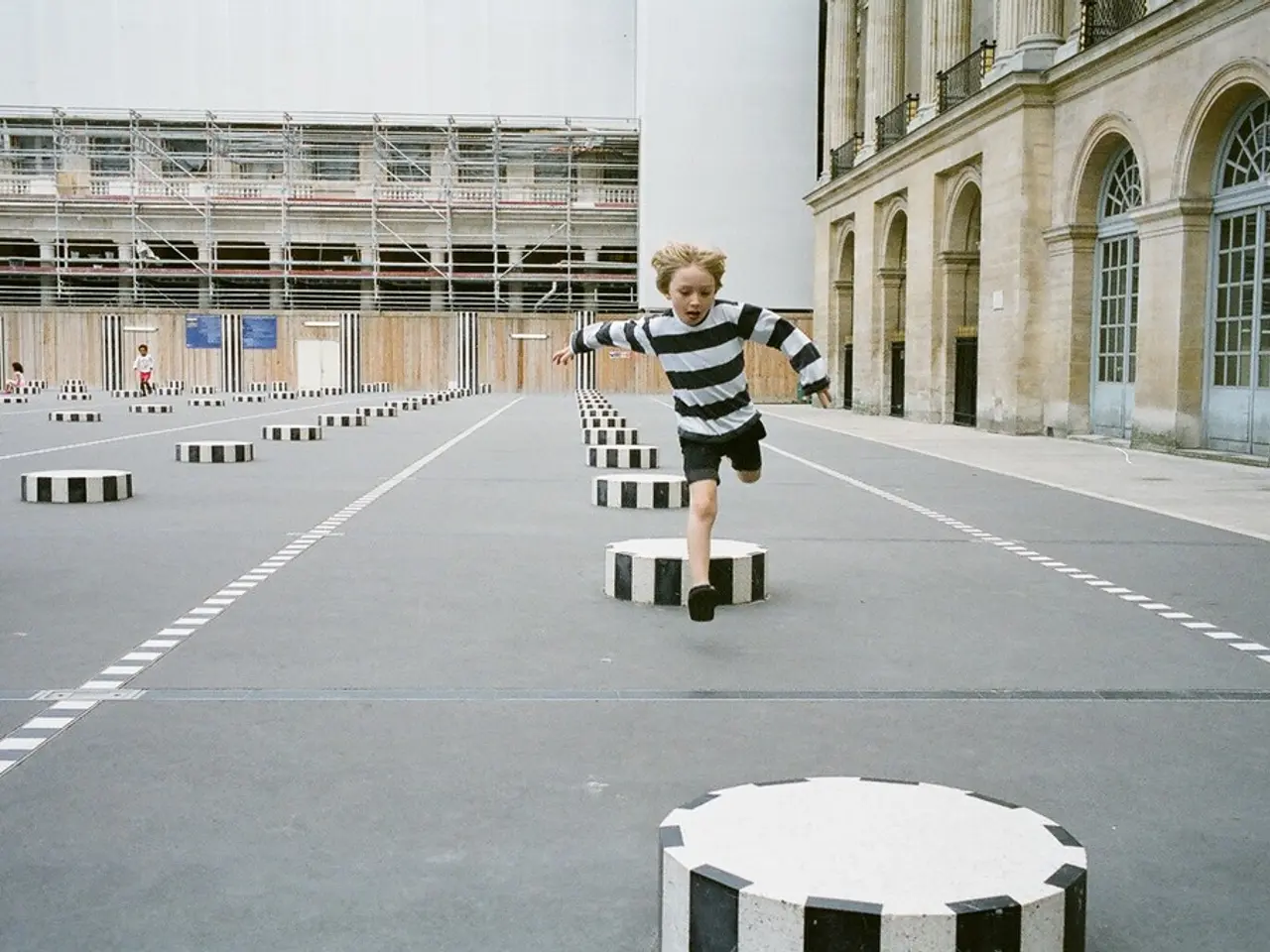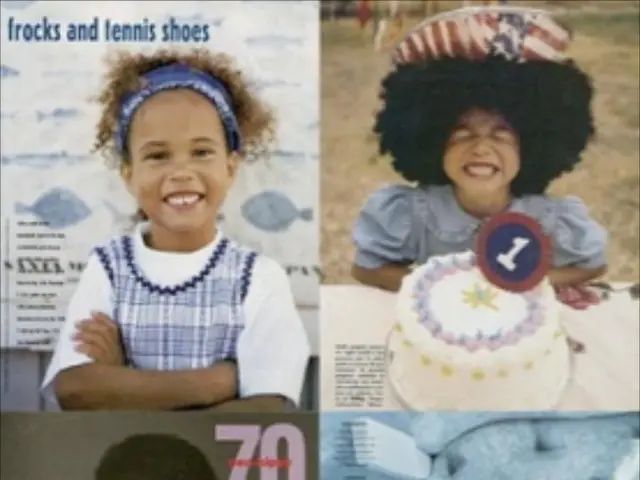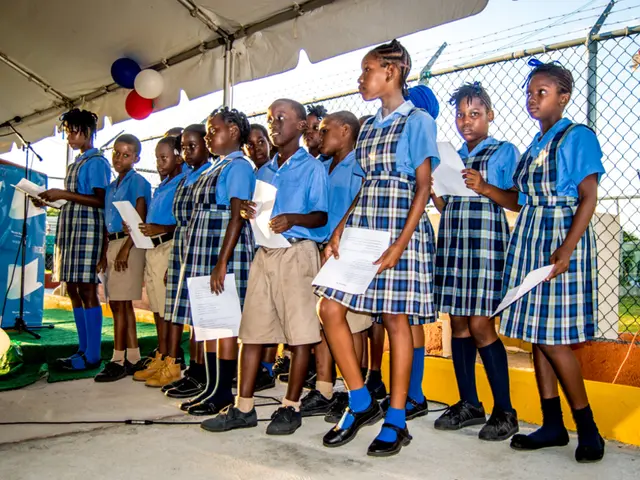Encouraging creativity and self-expression through the Reggio Emilia methodology in educational settings
Unleashing the Potential: Exploring the Reggio Emilia Approach
Embrace the power within each child, for they are not mere vessels waiting to be filled, but capable individuals brimming with curiosity and potential! Loris Malaguzzi, an influential educator, introduced this groundbreaking approach to education in the city of Reggio Emilia post-war Italy, where children are the essential protagonists in their learning journey.
Witnessing the Reggio Magic
Introducing a creative, collaborative, and environmentally aware learning environment, the Reggio Emilia Approach holds children at its center as co-constructors of knowledge. Through exploration, communication, and inquisitiveness, young minds discover the world using "hundred languages." Walk, talk, dance, draw, build – each is a venue for thoughts, emotions, and ideas.
The World Through a Child's Perspective
Reggio-inspired classrooms nix rigid structures, Instead, they provide open materials and experiences, encouraging children to follow their passions, ask questions, and develop their ideas at their own pace. Educators play the role of collaborators and observers, recording the learning process and offering stimulating prompts to deepen understanding.
Why Creativity Matters
Educational neuroscience backs the core Reggio principles, particularly the notion that creative endeavors such as storytelling, role-play, and visual art foster holistic development in young children. As Dr. Sue Robson, an expert in cognition in the early years, puts it, "Children's play with materials is a form of thinking." Themes like these can be found in her book Developing Thinking and Understanding in Young Children (Robson, 2019).
Arts-based learning not only bolsters children's creative abilities but also cultivates critical thinking, emotional awareness, and self-regulation. A study by researchers at the University of Cambridge advises that giving kids autonomy in their creative work fortifies their social and cognitive skills, echoing the Reggio approach's core value: child-guided exploration.
Reggio-Inspired Fun at the Children's Museum
The museum's exhibits blend seamlessly with the Reggio Emilia vision, inviting children to express, create, and imagine freely.
🌟 Light Painting: Expressing Through ShadowsPaint the darkness with light, revealing trails of color and movement. Through this interactive experience, children discover the harmony of light with time, space, and action.
🌟 Flip & Shine: Mirror MagicMarvel at a world inverted through mirrors, where children engage in abstract thought through playful movement and observation. With the kaleidoscopic effects, they develop a rudimentary understanding of symmetry and geometry long before school.
🌟 Pixel Play: Forging Visual MasterpiecesImmerse yourself in a sea of colorful blocks, creating striking mosaics. Design, spatial reasoning, artistic expression –this tactile adventure combines elements of all.
🌟 Thread Theory: The Art of ConnectionWeave together diverse threads, forms, and emotions, exploring the power of interconnected narratives. Every layer, every color tells a story – as conversations bloom, children develop empathy and self-awareness.
🌟 Mini Mart and Garden Ville: Role-Playing RealitiesStep into adult roles, mimicking everyday activities, or nurture plants, harvesting, and arranging them. Through these experiences, young minds explore imaginative storytelling, emotional development, and symbolic thought.
Educator Insights
Silvia Mariani, an atelierista (art studio teacher) at a Reggio-inspired preschool in Milan, shares, "When children express thoughts through sculpture or drawing, it's not decoration, but thought made visible." Teachers at the museum often observe children narrating their processes, prompting powerful dialogues and deep reflections.
Research speech
Creative expression nurtures cognitive growth. A 2018 study in Frontiers in Psychology found that arts-based exploration improves neural connectivity in children and promotes flexible thinking, while a long-term evaluation of the Reggio Approach found that individuals who attended Reggio-inspired preschools showed significantly better socio-emotional competencies in adolescence than their counterparts lacking early formal education.
Family Experiences
Parents attest to the emotional impact of Reggio exhibits, praising the freedom to express inner thoughts and feelings. Each artifact is a mirror to the child's world, a unique window into their imagination, developing confidence, and empathy.
In a world where metrics reign supreme, the Reggio Emilia Approach serves as a welcome reminder: Slow down, listen, and value what children already know and the possibilities they hold for their futures. By offering them space, time, and respect, we enable young minds to unleash their potential and develop a lifelong passion for learning.
- The Reggio Emilia Approach encourages children to explore the world using "hundred languages," which span from painting and drawing to dance and play, inviting them to express their thoughts and ideas.
- By providing open materials and experiences in Reggio-inspired classrooms, children are empowered to follow their passions, ask questions, and develop their ideas at their own pace, fostering their creative abilities and promoting holistic growth.








